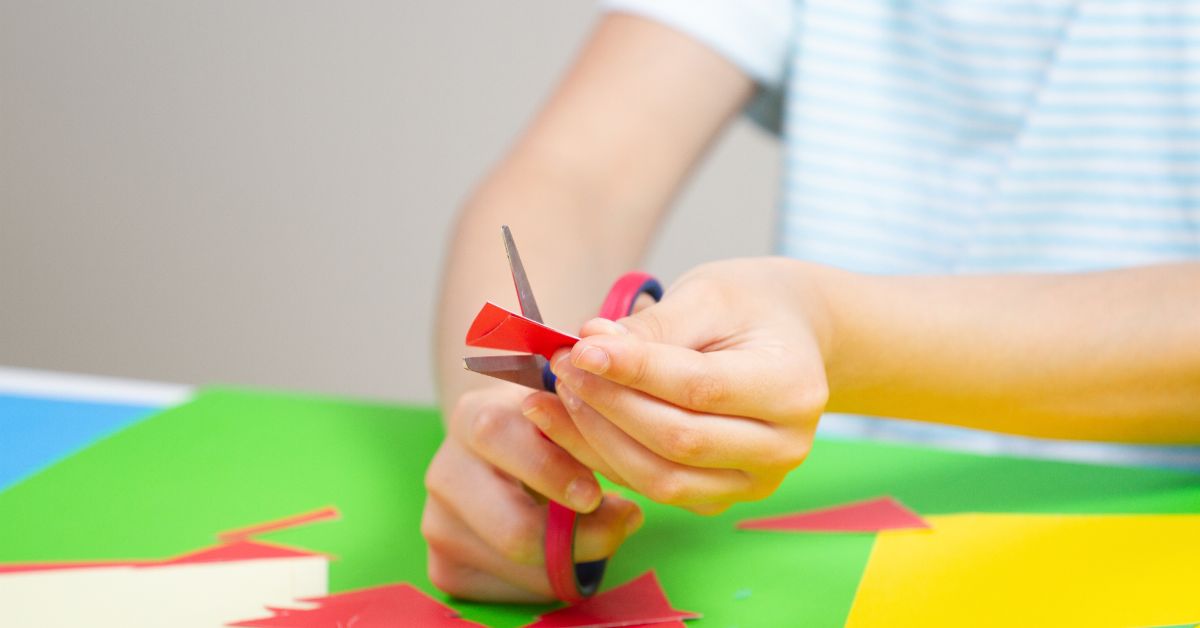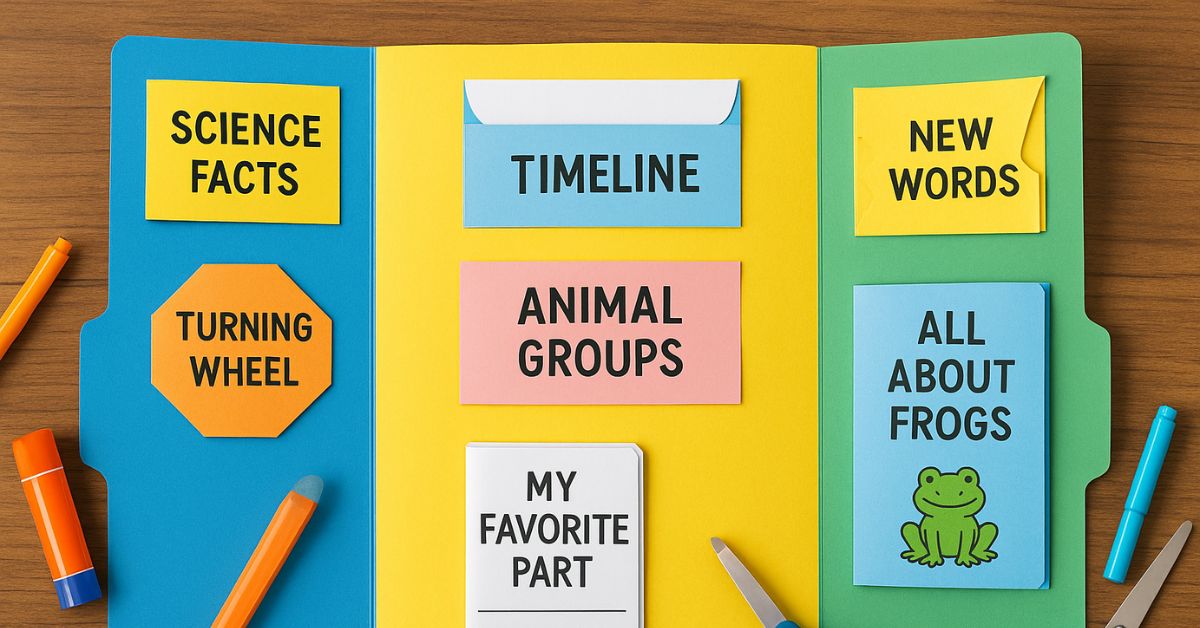Homeschooling offers incredible flexibility and opportunities for creative learning. One of the most engaging and adaptable tools many homeschooling families use is lapbooking. This versatile method transforms learning into a hands-on experience, making education not just effective but also fun! But what exactly is lapbooking, and how can you use it in your homeschool? This guide will explore everything you need to know, from what lapbooking is to practical ways to incorporate it into your homeschooling routine.
Lapbooking is a creative approach to organizing and presenting information in a visually appealing and interactive format. A lapbook is essentially a collection of mini-books, foldables, charts, and other materials that fit together inside a file folder or a similarly structured base. These components allow students to display what they’ve learned on a topic in a way that’s personalized and easy to review.
The beauty of lapbooking lies in its adaptability. It can be tailored to any subject, lesson, or theme. Whether you’re studying animals, history, science, literature, or math, lapbooks can work with your curriculum. Think of them as part notebook, part scrapbook, and entirely customizable.
This method doesn’t just help with retaining information; it also encourages creativity, organization, and critical thinking. Plus, it’s suitable for a wide range of ages and learning levels. Even older students who think they’re “too cool” for hands-on activities often enjoy lapbooking once they realize how useful and enjoyable it can be.
Why Choose Lapbooking For Homeschooling?
Lapbooking offers numerous benefits that make it an excellent choice for homeschooling families. Here are some key advantages:
- Engages Multiple Learning Styles
Lapbooking incorporates visual, kinesthetic (hands-on), and even verbal learning. By cutting, pasting, coloring, arranging, and writing, students use multiple senses, which helps information stick better. - Encourages Ownership of Learning
When children create their own lapbooks, they take pride in their work. Crafting a personalized project fosters independence and boosts confidence in their learning abilities. - Keeps Information Organized
Lapbooks are like mini portfolios. Students can see all the parts of a topic laid out in one place, making it easy to review and cement their understanding. - Supports Creativity
From designing cover pages to choosing how to display facts, lapbooking encourages students to think creatively. Kids get to shape their educational materials, meaning no two lapbooks will look alike. - Easy to Adapt
Whether your student is a preschooler learning the alphabet or a high-schooler analyzing Shakespeare, lapbooks can be scaled to match your curriculum and learners’ needs. - Breaks Up Monotony
Homeschooling can sometimes feel repetitive, especially if you rely heavily on textbooks or worksheets. Lapbooking introduces variety and makes learning feel fresh and exciting.

How To Get Started With Lapbooking
Getting started with lapbooking doesn’t require much. You’ll need some basic supplies, a topic to focus on, and a little preparation. Here’s a simple step-by-step outline:
- Gather Supplies
To create lapbooks, you’ll need:
- File folders (or cardstock for a sturdier base)
- Colored paper (construction or scrapbook paper works well)
- Scissors and glue sticks
- Markers, crayons, or colored pencils
- Printable templates for mini-books, tabs, and foldables (optional but helpful)
- Research materials like books, printouts, or your curriculum guide
- Choose a Topic
The subject of your lapbook can be anything. Some popular themes include:
- A specific animal (e.g., “All About Penguins”)
- Historical figures (e.g., “The Life of Abraham Lincoln”)
- Science topics (e.g., “The Water Cycle” or “Ocean Layers”)
- Literature studies (e.g., “Characters in Charlotte’s Web”)
Start with a topic your child is interested in or is currently studying in your homeschool. Over time, as you and your child become more comfortable with lapbooking, you can tackle more complex or multidisciplinary themes.
- Plan Content
Break the topic into subtopics or sections. For instance, if you’re doing a lapbook on frogs, your sections could include:
- Frog anatomy
- Life cycle of a frog
- Types of frogs
- Fun facts
These become the different components of the lapbook. You can decide how much detail to include based on your child’s age and understanding of the topic.
- Create or Find Templates
Many free and low-cost lapbooking templates are available online. These templates can save you time by providing pre-designed foldables, pockets, and mini-books. However, you can always design your own with simple shapes like squares, rectangles, and circles to suit your needs.
- Assemble the Lapbook
- Fold a file folder so it opens like a book. If necessary, attach additional cardstock to expand the space.
- Arrange and glue the different components (mini-books, pockets, etc.) inside the folder.
- Write labels or add captions to explain each section.
It’s helpful to do this in stages, especially for younger students, so they don’t feel overwhelmed.
Creative Learning with Lapbooks
One of the greatest strengths of lapbooking is how it encourages creative, hands-on learning. Many kids (and adults!) learn best when they actively engage with the material by creating something tangible. Here’s how lapbooks foster creativity in learning:
Personalized Designs
Each lapbook becomes a reflection of your student’s ideas and creativity. They can decorate the lapbook’s cover, choose colors for each section, and decide how to arrange the information inside. This design freedom makes learning more personal and memorable.
Interactive Elements
Foldable flaps, spin wheels, and pull tabs transform flat pieces of paper into engaging, three-dimensional tools. These interactive features make information more accessible and often spark curiosity to dig deeper into a subject.
Combining Art with Academics
Lapbooking gives students a chance to blend artistic expression with academic content. For instance, a child studying space can draw planets, include fun facts on pop-up tabs, and write their favorite space-related vocabulary. This mix of artistry and learning makes each project unique.
Using Lapbooks in Your Homeschool Routine
Lapbooks are incredibly versatile, so you can use them in almost any homeschool setting. Here are some ways to incorporate lapbooking into your homeschooling routine:
- Unit Studies
Lapbooks work wonderfully with unit studies, where your family dives deep into a single topic across multiple subjects. For example, if the unit study is about the ocean, you can cover marine biology, ecosystems, geography, and even incorporate writing prompts related to sea adventures. - Subject Reviews
After completing a lesson or textbook chapter, have your child create a lapbook to summarize and review key points. It’s a great way to gauge retention and help shy kids explain what they’ve learned. - Project-Based Homeschooling
Some families enjoy using project-based approaches where students take on longer-term assignments. Lapbooks make excellent culminating projects because they require research, creativity, and organization. - Homeschool Portfolios
If you need to maintain records of your child’s progress, lapbooks can be included in their homeschool portfolio. They’re a great way to document what’s been learned in an engaging and compact format. - Sibling or Family Collaboration
Lapbooks aren’t just for individual work. Siblings can collaborate on a group lapbook, sharing roles and responsibilities. It’s an excellent opportunity for teamwork and peer learning.
Challenges To Keep In Mind
While lapbooking is fun and beneficial, it’s important to approach it with realistic expectations. For instance:
- Time-Intensive
Lapbooks can take longer to assemble than worksheets or traditional notebooking. If your schedule is tight, consider spreading the project over several days. - Supplies Cost
Stocking up on file folders, colored paper, and other supplies can add up. Look for sales or use household items like cereal boxes instead of cardstock to save money. - Attention Span
For very young learners or kids who struggle with focus, divide the process into smaller steps. Have your child complete one section of the lapbook each day to avoid burnout.
Lapbooking is more than just a craft. It’s a learning tool that makes education hands-on, creative, and meaningful. Whether your goal is to solidify concepts, encourage independent learning, or add a spark of excitement to your homeschooling days, lapbooks can help you achieve it.
When you incorporate lapbooking into your routine, you’re giving your kids more than just another assignment. You’re helping them build skills in creativity, organization, and critical thinking while exploring topics in an engaging way. And isn’t that what homeschooling is all about?





